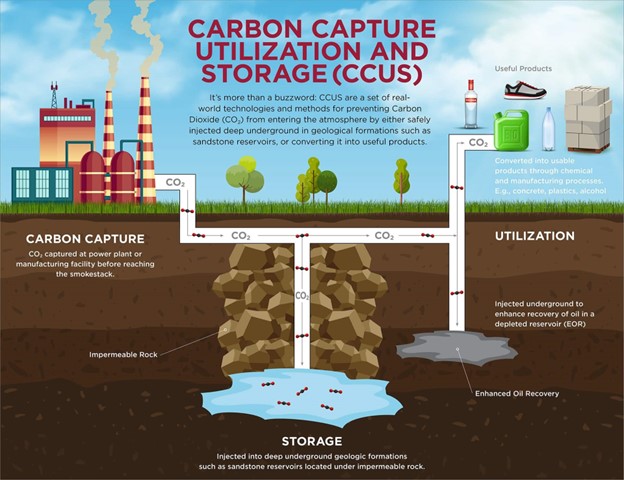Carbon capture, utilization, and storage (CCUS) is the process of capturing and compressing carbon dioxide that is then either permanently stored deep underground or converted into usable products. CCUS is a component of Indiana’s energy strategy. Additionally, CCUS offers opportunities to enhance economic and workforce development.
Capture technology has been around for a while, and new advancements are continuously being developed. Sites that have a higher concentration of carbon, such as power generation or industrial production facilities, are prime locations for carbon capture technologies. There are three main types of carbon dioxide capture systems to trap and separate CO2 from other gases: post-combustion, pre-combustion, and oxy-combustion. The National Energy Technology Laboratory (NETL) provides more details on these approaches.
There are two primary types of carbon sequestration: geologic and biologic. Geologic sequestration refers to deep underground storage, in which carbon that is captured and pressurized into a liquid is injected into saline formations, depleted oil and gas fields, or unmineable coal seams. These sites occur deep underground, over 3,000 feet from the surface. Biologic sequestration refers to storage of atmospheric carbon through vegetation, soils, woody products, and aquatic environments.
Carbon utilization provides economic value by reducing the costs of storage and by converting carbon into products. There are applications in use today, particularly in the chemical and petrochemical industries. There are other current and emerging applications for carbon utilization, such as food and beverage processing, new concrete formulations, and fire suppression.

Source: Context Energy Examined, Canadian Association of Petroleum Producers
